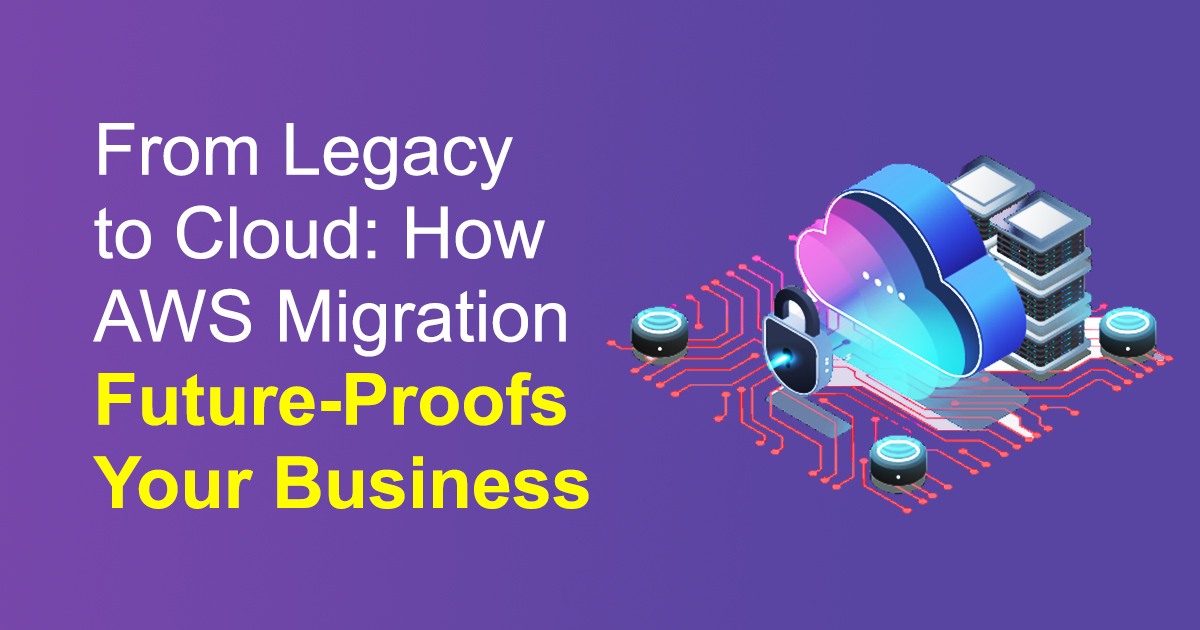
From Legacy to Cloud: How AWS Migration Future-Proofs Your Business
Outdated IT systems once considered reliable are now becoming roadblocks for modern businesses. Legacy infrastructure—like aging servers, on-premise data centers, and obsolete software—demands high maintenance costs, lacks flexibility, and exposes organizations to unnecessary risks. What worked a decade ago often slows down performance today, making it harder for businesses to stay competitive and innovate in a digital-first marketplace.
That’s why organizations are turning to the cloud. Migrating to Amazon Web Services (AWS) offers the chance to modernize operations, cut costs, and unlock new opportunities for growth. Shifting from legacy systems to AWS is not just a technical decision—it’s a strategic step toward future-proofing your entire business.
The Challenges of Legacy Systems
Legacy systems are a bit like running an old car: they still move, but they break down often, eat up money, and can’t keep up with modern demands. Businesses relying on them typically face:
-
High maintenance expenses – constant upgrades, repairs, and specialized staff.
-
Inflexibility – scaling up means buying more hardware, which is slow and expensive.
-
Security vulnerabilities – outdated systems are easier targets for cyberattacks.
-
Innovation barriers – modern tools like AI, automation, and real-time analytics are difficult to integrate.
Staying on such systems means falling behind in an era where agility and speed are vital.
Why Choose AWS for Migration?
AWS isn’t just another cloud option—it’s the world’s most trusted cloud platform, used by startups, enterprises, and governments alike. Its advantages include:
-
Global presence – data centers across the globe to serve customers with low latency.
-
Pay-as-you-go pricing – no heavy upfront costs; pay only for what you use.
-
On-demand scalability – infrastructure expands or shrinks automatically based on need.
-
Robust security – encryption, monitoring, and compliance with industry regulations.
-
Access to innovation – services in AI, IoT, machine learning, and analytics ready to use.
The Benefits of Migrating from Legacy to AWS
1. Cost Optimization
Legacy infrastructure eats into IT budgets. AWS replaces these costs with a flexible, usage-based model, freeing resources for strategic growth.
2. Business Agility
Launching new applications or scaling services is much faster with AWS. What once took months can now be achieved in days—or even hours.
3. Stronger Security and Compliance
AWS adheres to strict global compliance standards and provides advanced tools to protect sensitive data, reducing the risks of breaches.
4. Built-In Disaster Recovery
Downtime with legacy systems can be devastating. AWS offers disaster recovery and backup solutions that ensure continuous operations.
5. A Foundation for Innovation
Migrating opens doors to advanced technologies—machine learning, predictive analytics, automation—helping businesses innovate without large investments.
A Practical Example
Consider a retail company dependent on an old ERP system. Every festive season, their system crashes under high demand, causing revenue loss and customer frustration. After migrating to AWS, they can automatically scale their systems during peak hours, ensuring smooth operations and a better customer experience.
This simple shift doesn’t just solve immediate problems—it prepares the business for future growth and unexpected challenges.
The Migration Journey
Moving from legacy to cloud is a process, not an overnight switch. A typical roadmap looks like this:
-
Assessment – map out existing systems and identify workloads ready for migration.
-
Strategy development – choose the right approach:
-
Lift-and-shift (move as is)
-
Re-platform (make small optimizations)
-
Re-architect (redesign for the cloud)
-
Lift-and-shift (move as is)
-
Pilot projects – start small with low-risk systems to build confidence.
-
Full-scale migration – move critical applications with minimal disruption.
-
Optimization – once live, fine-tune for performance, cost, and innovation.
Addressing Common Concerns
-
“It will be expensive.”
Initial investments exist, but AWS’s cost model typically lowers long-term expenses. -
“Will downtime affect business?”
With careful planning and AWS migration support, downtime can be minimized. -
“Will staff adapt?”
AWS offers user-friendly services and training resources to ease the transition.
Staying Ahead with AWS
Migrating to AWS isn’t just about replacing infrastructure. It’s about gaining:
-
Faster innovation cycles
-
Stronger resilience against disruptions
-
Superior customer experiences
-
Access to future-ready technologies without extra infrastructure
Businesses that move early gain a decisive competitive advantage, while those that wait risk falling behind.
